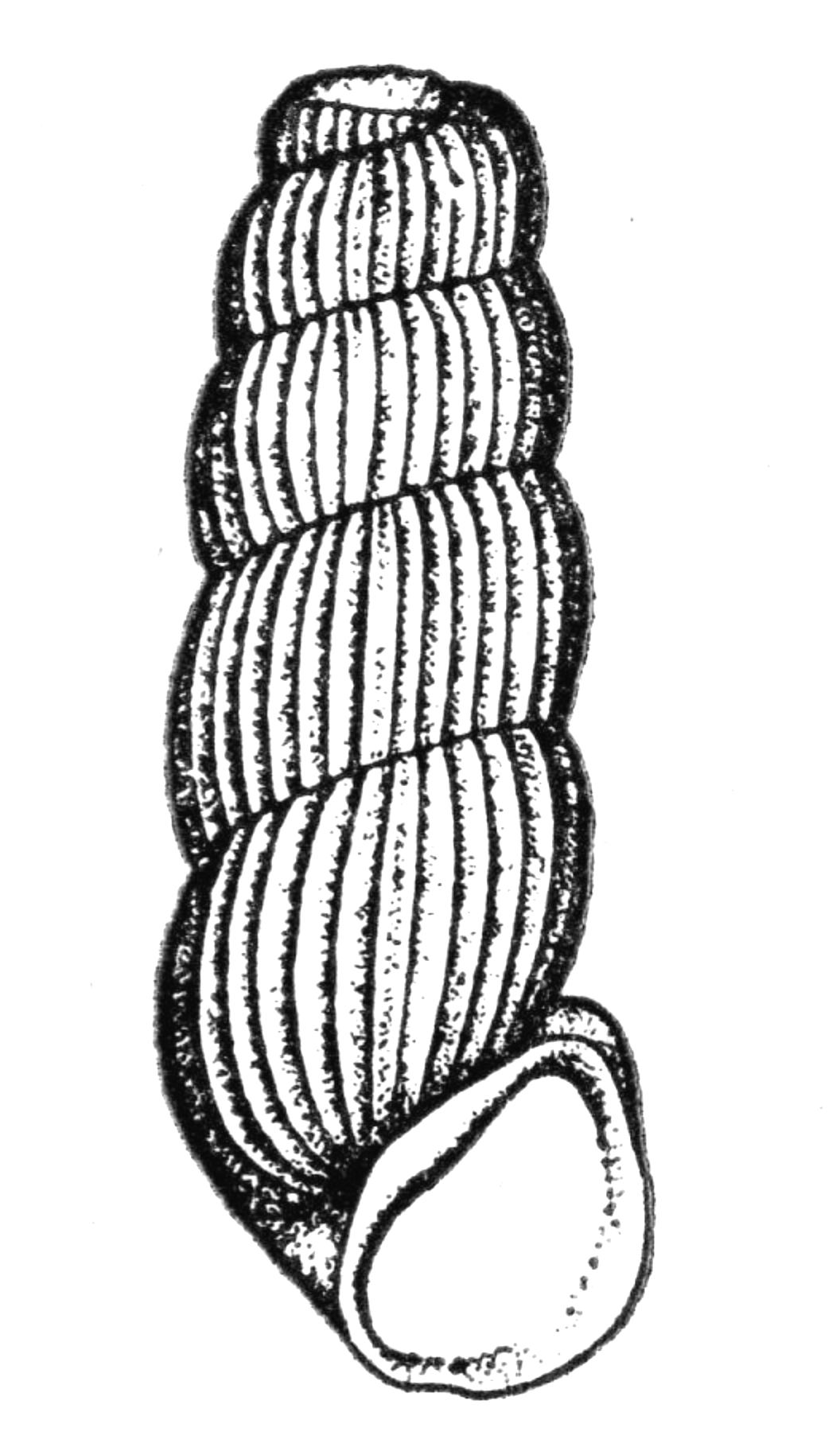- Truncatella (mollusk)
Taxobox
name = "Truncatella"

image_width = 50px
image_caption = "Truncatella bilabiata " [Walker, Bryant. 1928. The terrestrial shell-bearing mollusca of Alabama. Univ. Mich. Mus. Zool. Misc. Pub. 18, 180 pp.]
regnum =Animal ia
phylum =Mollusca
classis =Gastropoda
subclassis =Orthogastropoda
superordo =Caenogastropoda
ordo =Sorbeoconcha
subordo =Hypsogastropoda
infraordo =Littorinimorpha
superfamilia =Rissooidea
familia =Truncatellidae
genus = "Truncatella""Truncatella" is a
genus of small and minutesnail s which live on land very close to saltwater. These operculategastropod mollusks walk with a strange looping action, and have truncated shells.Many of the species are small enough to be considered
micromollusk s.Range of distribution
The genus is tropical and subtropical.
Habitat
Most of the species in this genus live in a habitat that is neither fully terrestrial nor fully marine: they live under plant debris near high tide level, where they are occasionally wetted with seawater by waves. A small minority of the species are fully terrestrial.
Taxonomy and species within the genus
The mesogastropod genus "Truncatella" was erected by
Antoine Risso (Risso, 1826) [Risso, Antoine (1826). Histoire naturelle des principales productions de l'Europe méridionale et particulièrement de celles des environs de Nice et des Alpes Maritimes. Vol. 4. no publisher listed, Paris.] for "T. costulata" (now "T. subcylindrica"), which is thetype species for this genus.There are several genera within the Truncatellidae, but the eponymous genus "Truncatella" is the largest (in terms of number of species); other genera in the family are "
Geomelania ", "Taheitia ", and "Blandiella " [Ross, Landon T. (1970). The anatomy of "Truncatella" Risso 1826 (Mollusca: Prosobranchia), and a revision of the genus in the Gulf of Mexico and the Caribbean Sea. unpublished Florida State Univ. dissertation. Retrieved on September 2007. [http://fsu.catalog.fcla.edu/fs.jsp?Ntt=FS001333928&Ntk=Number&Nty=1&N=23&I=0&V=D] ] [http://fsu.catalog.fcla.edu/fs.jsp?Ntt=FS001333928&Ntk=Number&Nty=1&N=23&I=0&V=D] , [ Clench, William J. & Ruth D. Turner (1948), A catalogue of the family Truncatellidae with notes and descriptions of new species. Occ. Pap. Mollusks, Harvard Univ. 1: 157-212.] , [Clench, William J. & Ruth D. Turner (1948), The genus "Truncatella" in the western Atlantic. Johnsonia 2: 149-164.] .There are approximately 30 species in the genus "Truncatella", including:
* "Truncatella bahamensis "
* "Truncatella bilabiata barbadensis "
* "Truncatella bilabiata bilabiata "
* "Truncatella caribaeensis "
* "Truncatella clathrus "
* "Truncatella guerinii "
* "Truncatella kiusiuensis "
* "Truncatella pulchella "
* "Truncatella scalaris "
* "Truncatella subcylindrica "
* "Truncatella truncatula "Characteristics of the genus
The various species of "Truncatella" are
pantropical in distribution, with a few exceptions such as "T. truncatula" and "T. subcylindrica".As implied by the name, these snails are notable for the way they modify their elongated shells as they mature, breaking off several of the
apical whorl s, and forming a relatively smooth seal for the remainder of the shell.These small snails live at or above the high
tide mark on the marine shoreline, where they are typically found associated with drifts of plant material, where their eggs are deposited [Ross, Landon T. (1969). Notes on the life history of "Truncatella caribaeensis" Reeve. American Malacological Union Ann. Rept. 1969:35-36.] .The adaptations of these land snails to the terrestrial environment are not so perfect as they are in the more usual
pulmonate land snails, and their terrestrial adaptations may in fact be comparatively recent [Rosenberg, Gary (1996). Independent evolution of terrestriality in Atlantic truncatellid gastropods. Evolution 50(2): 682-693.] .The method of
locomotion used by "Truncatella" is notable [Pilsbry, Henry A. & A. P. Brown (1914), The method of progression in "Truncatella", Proc. Acad. Nat. Sci. Philadelphia 66: 426-428.] . Instead of gliding over a slime trail using minute waves in its foot, "Truncatella" uses a very large and muscularproboscis to reach ahead and grasp a surface, at which point the small foot releases its hold and the proboscis contracts to pull the animal forward, after which the entire procedure is usually repeated. [Örstan, Aydin. How "Truncatella caribaeensis" moves. blog for 15 June 2006. http://snailstales.blogspot.com/2006/06/how-truncatella-caribaeensis-moves.html]References
Wikimedia Foundation. 2010.
